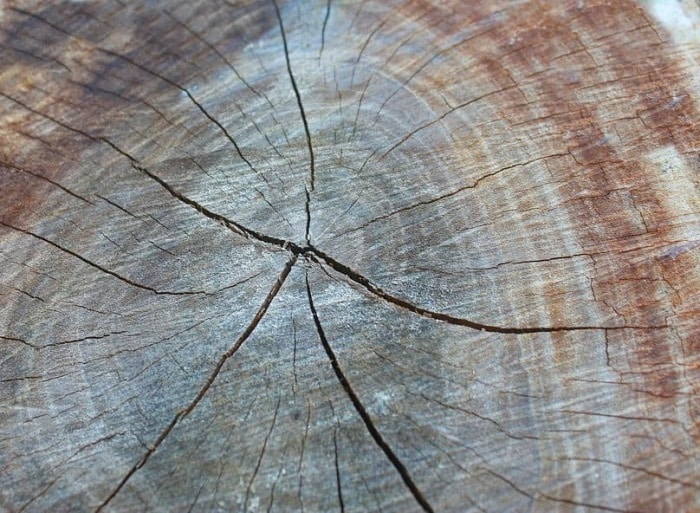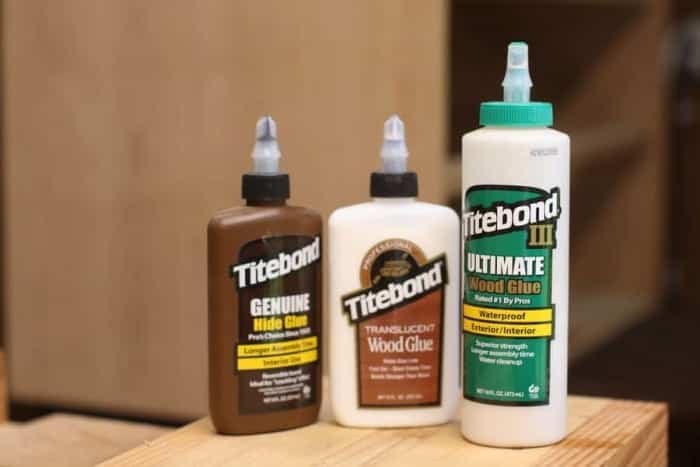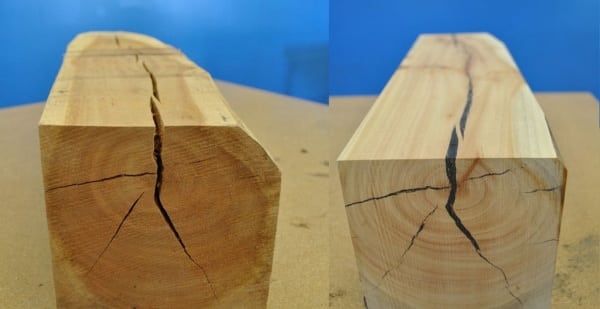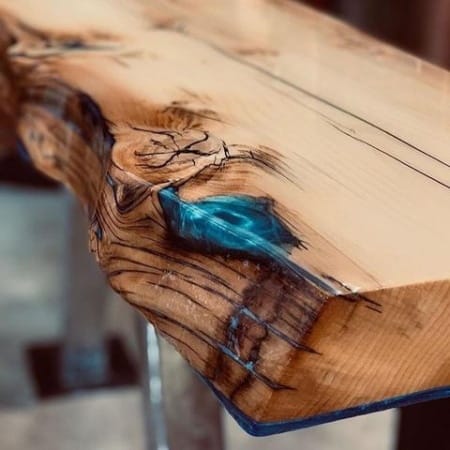Wood is an item that appears in every household. You can use various wooden objects such as tables, chairs, or cutting boards and decorative objects made from wood.
If you pay attention, cracks will appear on the surface of that wooden furniture after a while.
These cracks will reduce the aesthetics and functionality of the product. So let’s learn the methods to fix these cracks.
2 Simple Ways To Repair Cracks Wood
Many people often worry that fixing something will take a long time and be complicated. However, the methods we introduce below are relatively easy to do, and safe at home.
Use glue and sawdust
Using glue and sawdust is a common and easiest method to implement. With this method, you will not spend too much effort to implement.
Step 1: Prepare all the tools
You can buy sawdust packages from the supply stores or make your own.
In addition, you should prepare specialized wood glue for better adhesion to the wood. You will also need a few pieces of sandpaper to clean the surface before and after patching.
Step 2: Clean
In this step, you should remove the wood chips and garbage stuck in a crack. After pre-cleaning, use a piece of sandpaper to smooth the surface.
This pre-sanding will be easier for the mulch and glue to get into the holes.
Step 3: Patch the crack
In this step, you can do two ways to fill the cracks in the wood. You can mix hummus with glue into a mixture and spread it evenly over a crack.
Another way is that you can apply each layer of glue – humus so that they stick together.
Step 4: Finishing
This method does not take much time to implement but waiting to dry is quite long. Drying time will take about one day or more, due to the condition of your crack.
After the glue is completely dry, use a piece of sandpaper to sand the surface flat.
Use a specialized filling solution
Specialized filling solutions can be wood or epoxy fillers. These two substances are different, and you cannot use them together.
These two substances will also give different results, but the method will be the same.
Step 1: Determine the method you intend to use
Both methods will bond and seal cracks in the wood surface. However, the filler will be better if you want to put a coat of paint on after patching the damage.
However, if the wood surface you use must be used a lot in a humid environment, epoxy will be more suitable.
Step 2: Prepare
Both wood filler and epoxy are chemical. So it’s best to protect yourself with methods. Yet, the advantage is you will not be afraid of allergies or itching by sawdust.
However, breathing a lot of gas from wood fillers or epoxy is not suitable for health. You also need to wear gloves to protect your hands.
Although these two substances are not too dangerous, it is also straightforward to burn if your skin is sensitive. The protective suit will include goggles to protect you from drops.
Step 3: Clean the surface
You might have some strength at this step. Sandpaper and a little water will help your cleaning better. Many people are often subjective and skip this step.
However, cleaning will help the wood or epoxy filler work to its full potential.
Step 4: Patch the crack
If you are using epoxy, you should mix these dry mixtures and water. If you want the epoxy to be colored, you should start mixing from this step.
However, even if you use fillers or epoxy, you should carefully read the instructions before use.
Finally, pour the solution into the crack to let it flow down. It would help if you controlled your pouring speed so that the key could get into the small nooks and crannies and avoid air bubbles.
Step 5: Finishing
After completing the above steps, your last thing is to wait for it to dry naturally. Usually, the waiting time will be about a day, but it can also be longer due to the crack area.
After the wood surface is dried, you can apply color or polish to make your wood surface look more beautiful.
Select The Appropriate Method For Each Crack Condition
Both methods will work on your cracks. However, if you use a technique suitable for each type of crack, it will be more effective. In addition, if used correctly, it will save you material costs.
If the crack in your wood surface is significant but not profound. Then, you should use sawdust.
Sawdust and glue will help you fill in huge holes quickly and easily. If you use sawdust with small diameter cracks, it will take time to form and low aesthetics.
This method will help you spread the wood surface evenly and also save money. In stores that sell wood materials, they will often sell ready-made sawdust, and you should buy it and follow the steps above.
However, due to the type of wood, the color of the wood you choose will have different prices.
Basically, specialized wood fillers and epoxy are both liquids, so they are suitable for small diameter cracks or deep cracks. The fluid will quickly flow down and fill in the holes in the wood without shaping it.
However, there is one caveat for you to decide whether to choose wood filler or epoxy is about waiting time. Epoxy will dry faster than wood filler, so the waiting time will be shorter.
Moreover, it would be best to consider whether to paint the wood afterward to choose the suitable material.
If you want to paint on wood, epoxy is not a good choice because it does not stick to the color well.
FAQs
Repairing cracks on wood surfaces is not a regular job for many people. Indeed when you are just starting, you will have a lot of confusion. So we have compiled some questions to answer your questions.
What are useful tips when using epoxy?
Epoxy is a filling and fixing agent for wood surfaces. However, in using it, you will likely make this wire around, even stick to the skin.
This substance does not cause direct damage, but it might not be suitable if left on the skin for a long time.
If epoxy gets on your skin, you can use vinegar to clean it. Epoxy can also wire to surrounding surfaces such as countertops or floors. However, you can easily clean them with denatured alcohol.
For more details, you can refer to the expert guide in the video below.
What are some tips to stop a crack from spreading?
Fixing wood surface cracks is a relatively simple task. However, you will expose to chemicals and sawdust fragments, so you can wear tight clothing to protect your skin.
You also need to wear a mask to avoid inhaling debris or toxic chemicals. Gloves are also one of the necessary protective gear when working.
Conclusion
Cracks on the surface of the wood are not too tricky and harmful. So if you encounter such damages, calm down to solve the problem.
We have provided detailed instructions on three options for you to apply the repair.
However, you also need to consider the appropriate way to get the best results carefully. Remember to wear a mask and use gloves when doing it to ensure your safety.
Read more: How To Keep Green Wood From Splitting?




